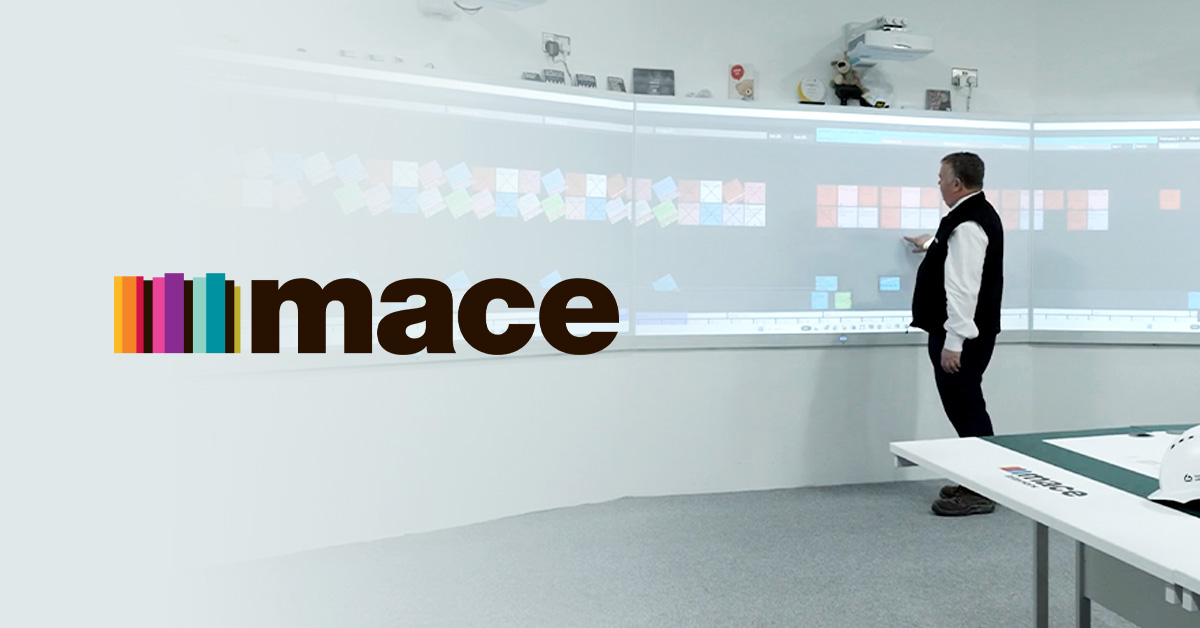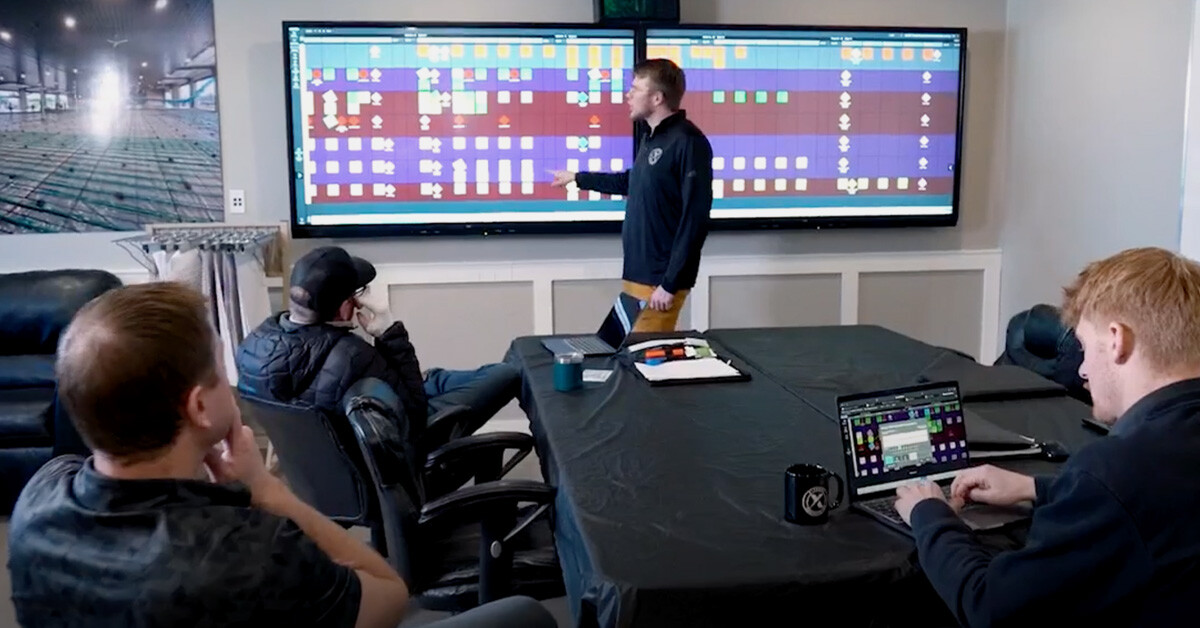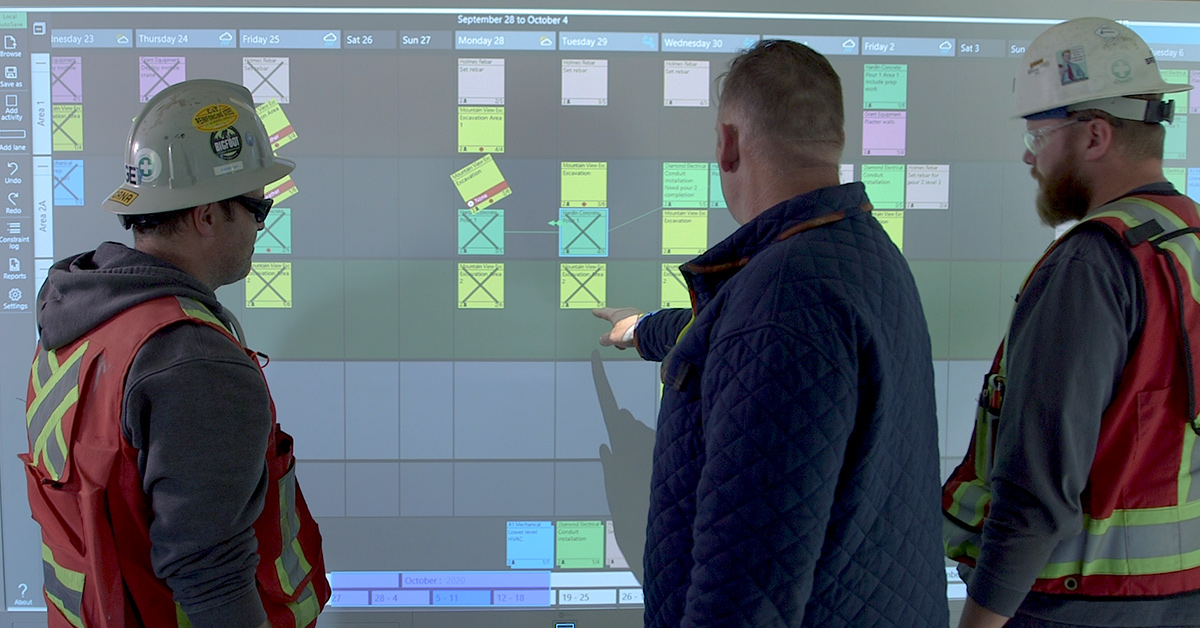The human side of Lean: Why people make the difference
Lean construction is often associated with process optimization, improved efficiency and waste reduction. But as Lisa Gibson from Colliers Project...
3 min read
Nialli
:
Jun 16, 2025 6:00:00 AM

In the construction industry, timelines are often tight and coordination is critical. Therefore, the way teams plan can make or break a project. Sticky-note-based planning methods have long been used in construction for their simplicity, ease of use and clarity. However, the practical limitations of planning on paper are making digital tools a necessity, especially on larger projects.
For Mace, a global consultancy and construction firm, the shift from analog to digital planning wasn’t just a technological upgrade — it was a strategic transformation.
“We’ve had Last Planner® for the last 20 years,” says Steve Hawthorne, Director of Operations at Mace. “You would put your plan together, have your 8-week lookahead, you’d break that down into a 2-weekly work plan and everyone would then work with it."

That manual process involved gathering teams in a room, placing sticky notes on a wall to represent tasks and then trying to capture that information for future use. When thinking about Mace’s current residential development contract in the heart of London, Hawthorne points out the difficulties sticky-note-based planning would present with a project of that scale. “This project today had 580 people come on-site. That’s a lot of people doing individual work plans. And it’s quite hard to keep an eye [on everyone],” he explains.
While this method had been the industry standard for years, it came with limitations. The process was time-consuming, prone to misinterpretation and difficult to scale across multiple teams or locations. Mace knew there had to be a better way — and found it in Nialli™ Visual Planner.
Prior to the adoption of Nialli, Hawthorne’s team used traditional pull planning methods in the form of Post-it® Notes. “We were all using them traditionally. We all knew if somebody slammed the door too fast, you lost 2 weeks of activities,” says Hawthorne.
The transition to a digital platform wasn’t just about replacing sticky notes with screens — it was about reimagining how planning could work in a modern, connected environment.
“I met with the developers of Nialli, and it was like they’d read my mind. How did they know I needed this?” exclaims Hawthorne.
With Nialli, Mace can now bring together people from different teams and sites in real time. Everyone has access to the same visual plan, and updates are instantly reflected across the system. This eliminates the need for manual transcription and reduces the risk of errors and miscommunication.

Going digital has also provided a clear, auditable trail of decisions and changes — something that was nearly impossible with the old sticky-notes method.
“We sit in this room, about 30 foremen and my team, and go through the weekly, 2-weekly work plan,” says Hawthorne. “It’s a little bit fluid walking into the meeting. They all walk out and we know what they want.”
Beyond convenience, Nialli has brought a new level of precision to Mace’s planning sessions. “In Nialli, you can get almost like an MRI of their brain,” Hawthorne notes. “You can see, how good are you? How far in advance can you really predict?”

That inclusivity is one of the most powerful aspects of the platform. Traditional planning sessions often involved only managers and schedulers, but Nialli makes it easy to include everyone — from site supervisors to tradespeople — in the conversation.
“You get at the end of every day how good your managers are,” says Hawthorne. “As a project director, I can’t afford to take chances.”
By involving the people who are closest to the work, Mace has been able to create more realistic and manageable plans. This not only improves project outcomes but also boosts morale and engagement among team members by defining clear, achievable milestones.
The impact of Nialli on Mace’s operations has been significant. The team has become more efficient, proven by daily efficiency scores. “That’s what I get from Nialli, which no Post-it Note was ever going to give me,” says Hawthorne.
With better visibility into project timelines and dependencies, teams can identify potential issues earlier and adjust plans proactively. This leads to fewer delays, smoother handoffs and more predictable delivery — all of which are critical in a competitive industry.

The platform also supports continuous improvement. Because every planning session is recorded and accessible, teams can review past decisions, learn from what worked (and what didn’t) and apply those insights to future projects.
“I get my labor levels, I get my constraints, I get my future predicted and I get scores out of 100,” explains Hawthorne. The accessibility of data-driven results has allowed Hawthorne and his teams to better manage their sites while meeting crucial deadlines.
For Mace, Nialli isn’t just a tool — it’s a key part of their strategy for delivering high-quality construction work at scale. “It’s a project director’s gift,” says Hawthorne. “Once they’ve installed it, the simplicity of it actually shows you the working out of your staff.”
As the construction industry continues to evolve, digital tools like Nialli are becoming essential for staying competitive. Mace’s experience shows that the right technology doesn’t just streamline processes — it empowers people, enhances collaboration and drives better results.
By moving from sticky notes to digital precision, Mace has set a new standard for what construction planning can look like — and they’re just getting started.

Lean construction is often associated with process optimization, improved efficiency and waste reduction. But as Lisa Gibson from Colliers Project...

The construction industry is constantly evolving, and forward-thinking industry leaders and experts are sharing insights into new and emerging...
.png)
Planning sessions with site teams are crucial for setting the foundation of any project. Hosting your first digital planning session with Nialli™...

Traditional modes of planning just weren’t cutting it for Extreme Concrete. As company Vice President Darin Wiebe says: “We could only see a certain...
.png)
Planning sessions with site teams are crucial for setting the foundation of any project. Hosting your first digital planning session with Nialli™...

The Last Planner System® (LPS) was first developed in the ’90s by Glenn Ballard and Greg Howell. Many practitioners have implemented LPS using analog...